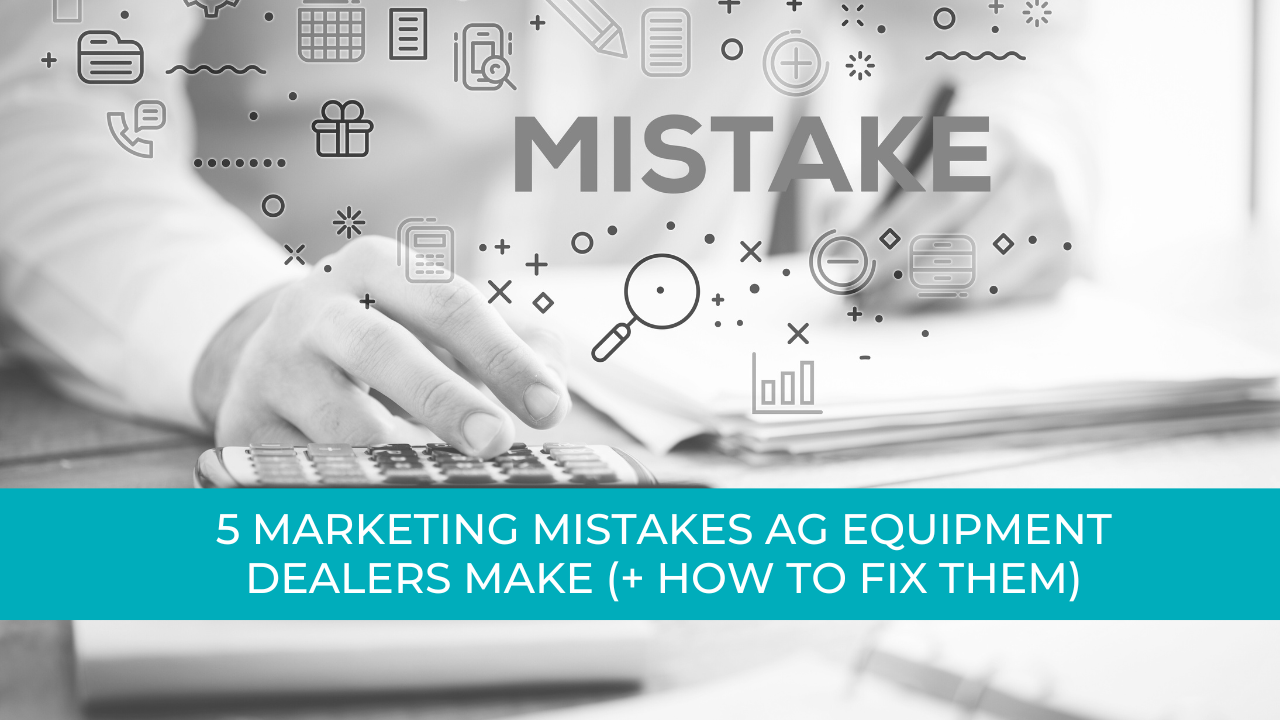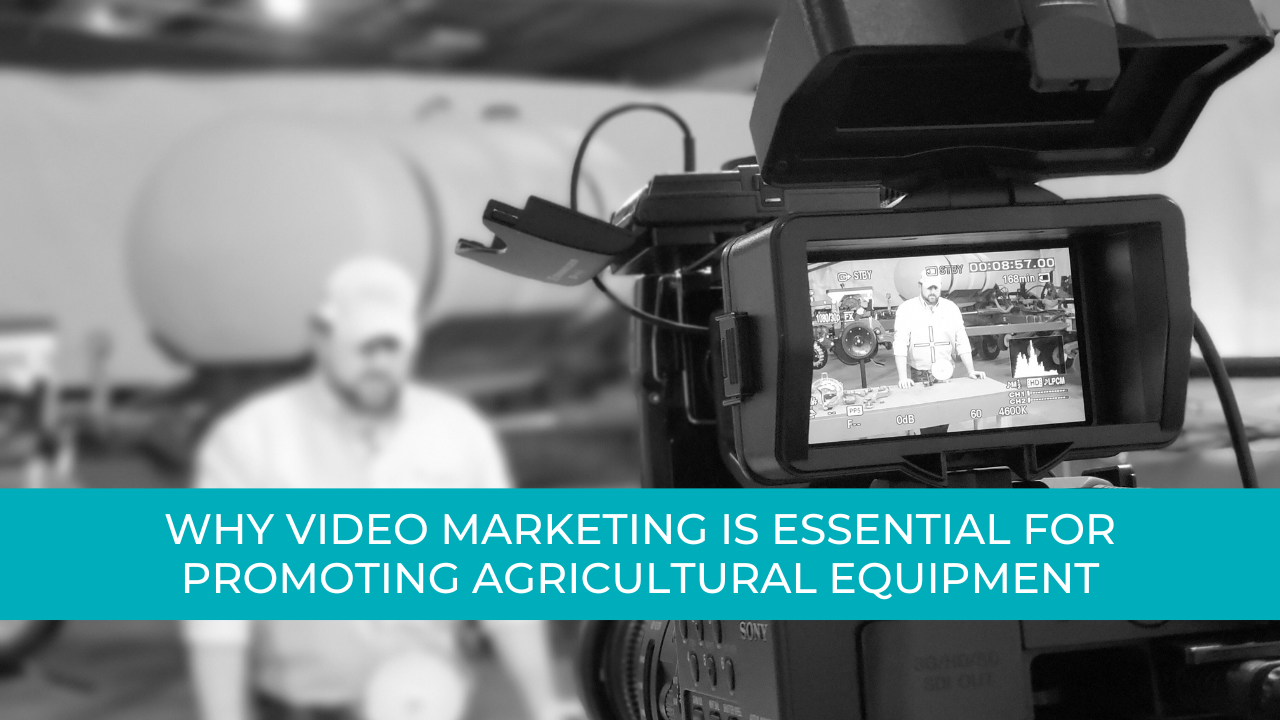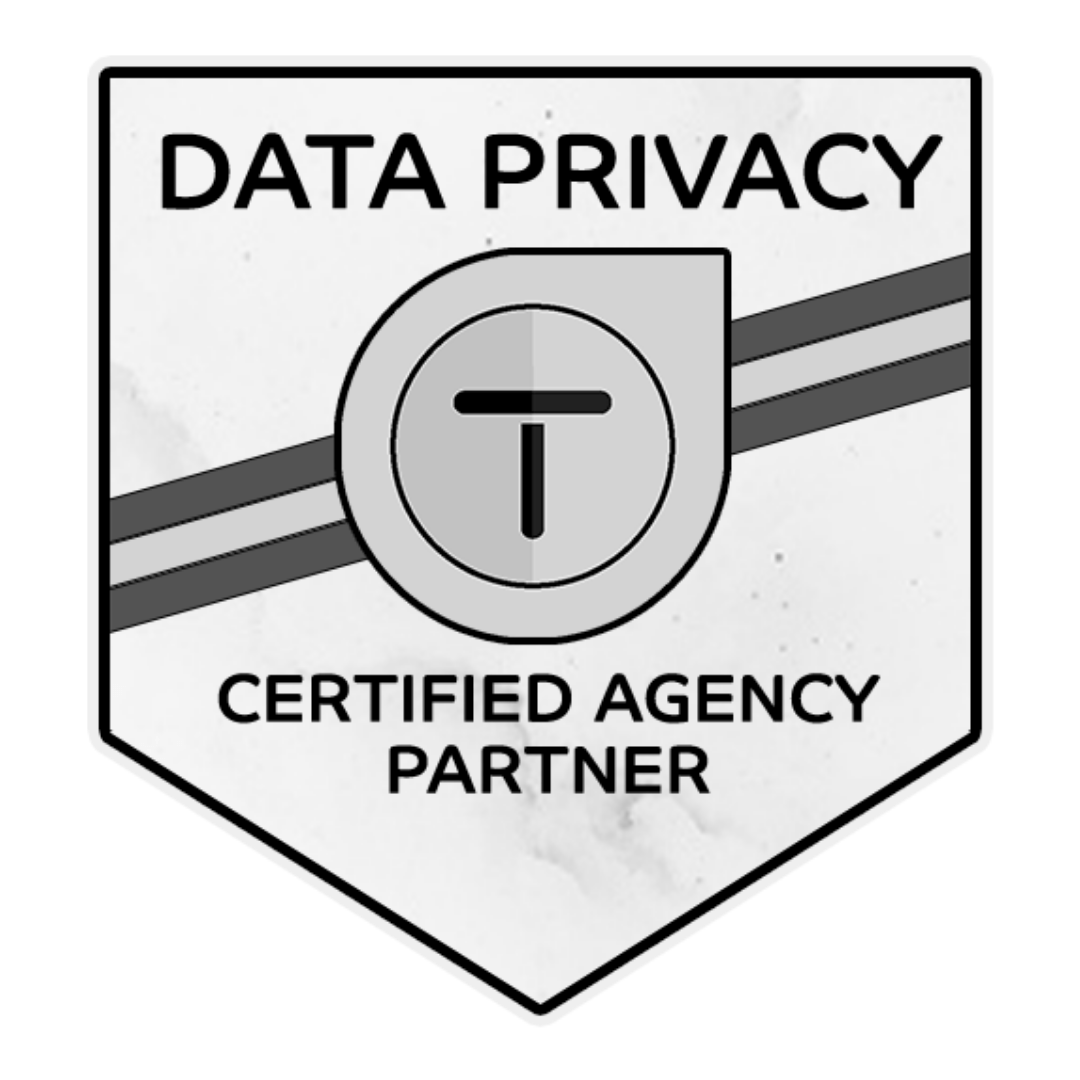Agtivation Blog
What's New In The Digital Ag World
Why Ignoring Your Prospects and Clients Is Costing You Money
You might think that you're giving your prospects and clients all the attention they need to make a purchase or inquire about the products and services you offer, but many aspects of the customer journey often go unnoticed.

If you neglect any step of your customer journey, your potential clients will lose their way and fall off the path toward a successful conversion. If you forget your users' journey, you will be neglecting your clients and costing your agricultural business money.
Losing out on a sale just because your customer journey wasn't up to standard is very frustrating because it's something you can easily fix - with a bit of help.
So, before you do anything else, take a look at our easy-to-understand guide on how you can stop losing money by accidentally neglecting the needs of your current and potential customers.
What is the customer journey?
The customer journey, also known as the "Customer Engagement Lifecycle," this is your potential client's journey when interacting with your agricultural company. This can include a range of interactions such as:
- Browsing your social media
- Checking out your website
- Opening an email
- Calling your company
- Reading an advertisement
The customer journey starts as soon as your client makes contact with your brand. If you want to make sure they make a purchase, you're going to have to make sure there are no holes in the path ahead.
Everything you do to interact with your potential client contributes to their journey and experience. Whether you're talking with them over the phone, engaging with them on social media, or replying to an email - you're improving their experience with your brand. Even after making a purchase, your client is still on their journey with your company.
By mapping out this customer journey for your clients, you'll help ensure that no customer slips through the cracks and you don't lose out on money.
What is customer journey mapping?
Customer journey mapping is a strategy that helps businesses gain insight into their clients' pain points. It's also ideal for helping you optimize and personalize your customer experience.
Start creating a visual story of your customer's interactions with your brand by clearly mapping out their journey. This will allow you to see your business and its processes from the eyes of your clients.
Mapping your customer's journey has a lot of advantages, including:
- Optimizing your customer onboarding process
- Filling in gaps in your buyer journey
- Ensuring that no prospect gets missed or overlooked
- Understanding the differences in buyer personas
- Staying in contact with every client, and being there when they need you

How can the customer journey help you stop ignoring clients?
You just sent out an awesome email series to all of your subscribers. They opened up the email, gave it a read, and are incredibly invested in your work. They love every bit of advice you've provided, and they're completely sold on your services.
They want to work with you right away. You've provided them with an excellent customer journey! There's just one problem - there's no CTA (call to action) at the bottom of the email. The lack of a CTA will create a standstill for your potential client because they don't know what to do next.
Because there's no CTA, your potential client won't know what to do next, so they'll simply close the email. If you'd added a call to action like 'contact us today' or 'give us a call for a free quote,' your reader would have continued on their journey.
By carefully studying your customer journey and pinpointing any cracks in your marketing strategy, you'll be able to fix the customer journey and ensure there are no holes for your prospect to fall through.
So when you compose your follow up email, update your website, or post an ad on social media, remember to view it through the eyes of your prospect. This will help you see if anything would stop your client from leaving the customer journey without converting.
This is just one example of how to look at just one aspect of any business process.
How do you map out a customer journey?
Mapping out a customer journey is an easy and effective strategy for your business.
Here are three simple steps to help you understand how to map out and understand your customer journey effectively.
1. Always focus on the customer's intent
When planning out the customer journey, you should always put yourself in their shoes. Your clients are the reason your company exists, and you should always consider their needs before anybody else.
A lot of people forget this when organizing the marketing for their company. When putting together their SEO strategies, social media posts, and branding, they disregard customer intent. But you should always consider how your clients and potential clients are interacting with your brand.
Ask yourself:
- Are your clients satisfied with their experience?
- Is your website easy to navigate?
- Can they get all the information they need?
If the answer to any of these is no, you have some serious work to do!
During our research of agricultural companies, we noticed that 35% of agriculture websites looked unprofessional.
94% of your visitor's first impressions come from your website design alone! If you have a poorly designed website, you could be risking the integrity of the customer journey.
Is your website easy to use and up to date? If not, then you're going to lose clients and money because you're not paying attention to what your prospects need.
If your brick-and-mortar store looks terrible on the outside, then your clients will not come inside. The same can be said about your website, so make sure it looks attractive to potential clients.
2. Pay close attention to customer touchpoints
Every time a potential client contacts your brand, you have a chance to improve your profits. It doesn't matter if this is before, during, or after they've converted. If you act quickly, you will be able to enhance the amount of money you're making.
All the interactions your client has with your brand are known as touchpoints.
Touchpoints are when your user:
- Interacts with an ad on social media
- Loads up your website
- Fills out a contact us form on your website
- Has a phone conversation with you
- Leaves a review on your Google Business Profile
- Comments on social media
By paying close attention to these different touchpoints, you'll be able to find issues with your customer's journey and fix them.
The fewer obstacles in your customers' way, the easier it'll be for them to enjoy their experience with your brand. This will improve the opportunity for repeat business, which is more profitable for your company.
3. Create a graphic to guide you
Put everything together by building a simple graphic of your customer journey map. This will allow you to highlight when and where your customers stop interacting (The cracks) with your brand or get frustrated and leave.
By highlighting everything on an easy-to-read graphic, your team will be able to see just where they need to act. They can move in, adjust the strategy eliminating the cracks, and create a seamless customer journey for your potential clients.
Unfortunately, you can't anticipate every possible scenario that's going to occur but finding the pain points in your journey and making them easier for clients is a crucial step in the right direction.
Having a graph full of crucial customer data is precisely what you need to start understanding your client's behavior. It will help you fix any problems, but it'll also show you where your agriculture company is succeeding.
4. Engage with your clients
Customer engagement may help with securing quality clients and that will be a strong start to the business relationship. They will appreciate the ongoing communication with them, especially while you're working on their project, keeping them updated on the progress as well as the ongoing costs.
How to engage with your client throughout the project
When you first start the project, provide them an overview of the timeline or expectations. This helps to remove the guesswork on their end and assists them with planning for their tasks. If it is a bigger project that may take a few weeks or longer, consider sending weekly update reports to keep them informed.
Consider providing examples of your projects, customizations, or experiences. This will help them to see the whole picture and possibly expand their project with you.
You may want to introduce your client to your entire team so they can get to know who they will be working on the project. This will create a more personal touch which will increase the chance of word-of-mouth referrals and repeat business.
We’re often asked about suggestions for customer engagement. Various ways to engage and communicate with your clients are:
- Private message
- Social media
- Zoom
- Website chat
- Telephone
- Face-to-face
At the start of the project, ask them what method of communication they prefer when you ask them for their phone numbers and email addresses. You may also ask what time of day is best if you do need to speak with them. This level of personalization during work on their project shows that their project is important to you. Also, having this information allows you to stay in contact with them after their initial project is complete, thus nurturing the client relationship. And, it makes it easier to ask for a testimonial or review!
Remember to pay attention to your current clients too!
Giving your attention to potential clients is excellent! This means you won't lose out on any money, and you'll secure every new lead that comes your way.
But don't forget about your current clients. Just because somebody has already converted doesn't mean they won't convert again.
It can cost you up to
6 to 7 times more to capture a new customer than it would be to retain a current customer. Plus, if you increase your customer retention by
5%, you'll be able to boost your profits by
25% -95%!
Retaining customers can be expensive, but it's a lot cheaper and a lot easier than the amount of time and work you have to put in to make another sale.
Besides, working with a client you've worked with before is excellent. You already know what they like and don't like making the process easier than a new client.
If you need a hand to map out your customer journey or want some help retaining high-profile clients in the agricultural industry, then
get in touch with Agtivation today to make sure you're not losing out on money by ignoring your clients.
Get in contact with our experts today
to stop losing out on money by ignoring your prospects and clients. Let us get your business the conversions it deserves.














